Aunque las clasificaciones le dirán qué tan bueno es un libro según nuestros dos criterios principales, no le dirán nada acerca de sus características particulares. Así, utilizamos 20 cualidades para clasificar cada libro según sus fortalezas:
Aplicable – Obtendrá consejos que puede aplicar directamente en su trabajo o en situaciones cotidianas.
Analítico – Comprenderá el funcionamiento interno del tema a tratar.
Audaz – Encontrará argumentaciones que podrían romper con posturas predominantes.
Bien estructurado – Lo encontrará particularmente bien organizado para apoyar su recepción o aplicación.
Científico – Se enterará de hechos y cifras con bases científicas.
Conocimiento experto – Tendrá el privilegio de aprender de alguien que conoce del tema al derecho y al revés.
Contextual – Conocerá información de contexto como marco para acciones o análisis informados.
Controversial – Se enfrentará a opiniones fuertemente debatidas.
Ejemplos concretos – Recibirá consejos prácticos ilustrados a través de su implementación en ejemplos o anécdotas reales.
Elocuente – Disfrutará de un texto escrito o presentado de manera extraordinaria.
Exhaustivo – Encontrará todos los aspectos sobre un tema.
Revelador – Le ofrecerá información altamente sorpresiva.
Innovador – Puede esperar encontrar algunas ideas y perspectivas verdaderamente nuevas sobre productos o tendencias nuevas.
Inspirador – Querrá poner en práctica inmediatamente lo leído.
Interesante – Leerá o verá algo de principio a fin.
Para expertos – Usted obtendrá el conocimiento del más alto nivel que necesita como experto.
Para principiantes – Lo encontrará ser un buen inicio si recién empieza a conocer el tema o no tiene experiencia ni conocimientos previos.
Tema en boga – Se encontrará en medio de un tema de gran debate.
Revelador – Obtendrá conocimientos que lo sorprenderán.
Visión general – Recibirá un tratamiento general del tema en el que se mencionen sus principales aspectos.
Visionario – Podrá echar un vistazo al futuro y lo que podría significar para usted.









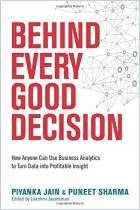

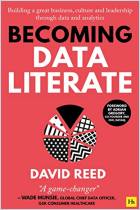
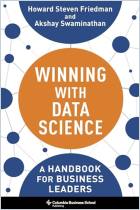
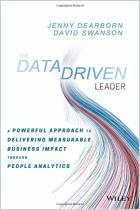
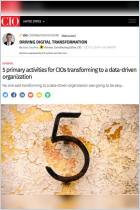





Comment on this summary or Comenzar discusión
### Summary
### Introduction
The e-book begins via emphasizing the developing significance of facts in modern-day global. It introduces readers to the role of a information analyst, highlighting the skills and equipment vital for success in this area.
### Chapter 1: Understanding Data
This chapter provides a foundational know-how of facts types, assets, and systems. It covers:
- The difference among structured and unstructured records.
- Common information formats and resources.
- The importance of records first-class and integrity.
### Chapter 2: Data Collection and Preparation
Readers find out about the crucial steps concerned in collecting and preparing statistics for analysis, consisting of:
- Data collection strategies and gear.
- Data cleaning techniques to handle lacking or inconsistent records.
- Data transformation and normalization techniques.
### Chapter 3: Exploratory Data Analysis (EDA)
EDA is a critical step within the statistics analysis technique. This bankruptcy covers:
- Techniques for summarizing and visualizing facts.
- Identifying patterns, tendencies, and outliers.
- Using statistical measures to recognize data distributions.
### Chapter four: Statistical Analysis
This chapter delves into the statistical methods utilized by information analysts, which include:
- Descriptive and inferential statistics.
- Hypothesis checking out and self belief durations.
- Correlation and regression evaluation.
### Chapter five: Data Visualization
Effective records visualization is essential for communicating insights. This chapter explores:
- Principles of true information visualization.
- Tools and techniques for growing visualizations (e.G., charts, graphs, dashboards).
- Best practices for imparting facts to exclusive audiences.
### Chapter 6: Predictive Analytics and Machine Learning
An creation to predictive analytics and system learning, overlaying:
- Key principles and algorithms in machine gaining knowledge of.
- Steps worried in building predictive models.
- Evaluating and validating version overall performance.
### Chapter 7: Data-Driven Decision Making
The e-book emphasizes the importance of making knowledgeable selections based on statistics evaluation. This chapter includes:
- Techniques for interpreting analytical results.
- Case studies demonstrating facts-pushed decision-making in numerous industries.
- Ethical issues and facts privateness problems.
### Chapter eight: Tools of the Trade
An evaluate of popular gear and software program used by statistics analysts, together with:
- Programming languages like Python and R.
- Data visualization equipment like Tableau and Power BI.
- Statistical software like SPSS and SAS.
### Chapter 9: Developing Analytical Skills
This bankruptcy affords recommendations and techniques for developing and honing analytical abilties, such as:
- Critical questioning and problem-solving techniques.
- Continuous getting to know and expert improvement.
- Networking and staying updated with industry traits.
### Chapter 10: The Future of Data Analysis
The book concludes with a look at the future of statistics evaluation, discussing rising developments and technologies that will shape the sector, together with:
- Big Data and its implications.
- Artificial Intelligence and superior device gaining knowledge of strategies.
- The evolving position of facts analysts in a statistics-driven world.
### Conclusion
"Be Data Analytical" is a sensible and complete guide that covers the entire spectrum of statistics analysis, from foundational ideas to advanced techniques. Nithya Sashi's clean and engaging writing fashion makes complex topics available, supplying readers with the knowledge and self assurance to assume, examine, and innovate like a facts analyst. Whether you are a amateur or an experienced professional, this ebook gives treasured insights and realistic advice to help you be successful within the ever-evolving discipline of records analysis.
Key Insights and Takeaways
Morrow suggests that decision-making needs both human intuition and data analytics in order to be integrated properly. This core tenet permeates the entirety of the guide — reminding that where data gives itself to the core of understanding, human judgment is, and always will be, irreplaceable. Morrow argues that leaders should create a culture in which employees are encouraged to play with data rather than get bogged down with big data effort and results.